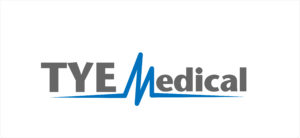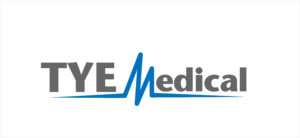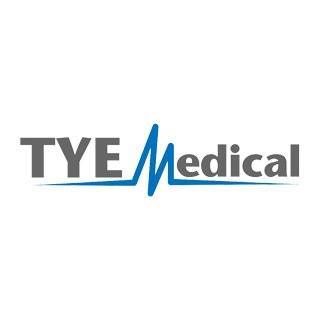Iron Deficiency in Women: Can You Be Iron Deficient Without Anemia?
Tye Medical Incontinence Products
For more information about the author, click to view their website: Tye Medical
Jun 17, 2024
Florida - Sarasota, Bradenton & Charlotte Counties
Email US
Click to Email UsYou need iron to produce and maintain healthy red blood cells. When you lack enough iron you’re at risk for developing anemia. But what you may not realize is that you can have low iron levels without being diagnosed as anemic. It’s true that iron deficiency is the most common cause of anemia, which is why doctors might rule out an iron problem if you test negative.
If you have anemia, your red blood cell count is too low, commonly causing fatigue and weakness. About 20% of the worldwide population has iron-deficiency anemia, making it one of the most common nutritional deficiencies in the world. Your body needs iron to make enough healthy red blood cells.
But three times as many people have low iron levels with a healthy amount of red blood cells. And doctors might not look any further or discover you are low in iron. If left undiagnosed and untreated, iron-deficiency can progress until your red blood cells diminish and you become anemic.
Let’s take a closer look at the symptoms and signs of iron deficiency without anemia and how it’s treated.
Symptoms of Iron Deficiency Without Anemia
So the diagnosis is different but are the symptoms the same? Will you suffer the same side effects as a person with diagnosed anemia? In some ways, yes. Both conditions share the most common symptoms, such as:
- Fatigue and lethargy
- Trouble focusing and concentrating
- Mood changes
- Weakness while active
Anytime you notice these symptoms, it’s worthwhile to check with your doctor. Women should have their iron levels checked at least occasionally since women are very prone to iron-deficiency due to menstruation and childbirth. Your doctor can order blood tests to learn more about your iron and red blood cell count.
Think of iron deficiency as a factory that falls behind production demands. It might take weeks for it to fall below the minimum productivity mark, and once it does, it’s tough to catch back up. It’s the same with our iron stores. If we experience several different factors that are draining our iron stores, we’ll use them up more quickly and be less equipped to rebuild them.
What Causes Iron Deficiency?
You may find one cause of low iron or three. Sometimes it’s a combination of factors. But the most common causes include:
- Not getting enough iron through food or supplements
- Needing more iron than usual (heavy bleeding, surgery, childbirth, etc.)
- Poor iron absorption
You’re more likely to develop iron deficiency if you:
- Are a vegetarian or vegan (meat, especially red meat, is iron-rich)
- Are pregnant
- Are still growing (children and teens)
- Are an athlete
- Have active celiac disease or inflammatory bowel disease
- Have had gastric bypass surgery
- Experienced changes in stomach acid from H. pylori infection or from using proton pump inhibitors (a class of medication that treat acid reflux)
- Are of childbearing age, especially if your periods are heavy
- Have lost blood due to surgery or internal bleeding
What Do Ferritin and Hemoglobin Have to Do with Iron Deficiency?
Ferritin plays a critical role in iron deficiency, because it's a protein that stores and releases iron when needed. When you’re running low on iron, your body pulls it from your ferritin reserves, and if not replenished, these stores can become depleted. This means that you can have low ferritin and temporarily have normal iron levels.
According to the World Health Organization (WHO) low iron is equivalent to ferritin under 12 mcg/L. But other studies suggest you could be considered iron deficient with ferritin levels under 30 mcg/L. Blood tests are available to determine to ferritin levels and blood saturation.
Hemoglobin can be impacted when your iron levels drop low enough for long enough. It’s the part of your red blood cells that carry oxygen. But you need iron to make healthy red blood cells and hemoglobin. So the less iron in your bloodstream, the less hemoglobin, and the less oxygen your cells receive. This is what triggers that list of symptoms, including fatigue.
What Is Anemia?
You're diagnosed with anemia if your ferritin and hemoglobin (and red blood cells) are both low. This is considered iron-deficiency anemia and is very common. But if your hemoglobin is unaffected even though your ferritin is normal, it’s considered iron deficiency without anemia. However, if your ferritin levels don’t improve, it’s likely to progress to anemia as you’re unable to produce enough iron to make red blood cells and hemoglobin.
Blood tests to diagnose anemia usually include ferritin and hemoglobin. Your doctor and run other tests to learn more about your red blood cells and how healthy they are. This can provide a more detailed picture of what is going on in your body.
How Much Iron Do You Need?
Women who menstruate require 18 mg of iron each day to maintain health. You may need more if you’re pregnant or nursing. If you're postmenopausal you need 8 mg daily.
You can get iron from several food sources, but the most easily absorbed iron comes from red meats. However, you can get plant-based iron from leafy green vegetables, beans, lentils, and iron-fortified breakfast cereals.
How Do You Treat Iron Deficiency without Anemia?
Your doctor will first consider your diet and recommend that you adjust your diet to include quality sources of iron. But if you have problems absorbing iron, this won’t be enough. Often supplements are also advised.
In more severe cases, your doctor might recommend iron infusions. When you receive iron infusions, you receive iron through an IV (intravenously). This is done over several visits. It gets iron into your system in greater quantities and more quickly.
After treatment, whether through infusion or supplements, you’ll likely have follow up visits to see how the treatment is working and if there are any changes in your blood test results.
How Much Iron Should You Take?
You should have doctor supervision while taking iron supplements. Taking iron when your levels are within normal range can be dangerous. Elevated iron levels can also cause serious health problems.
Your doctor will likely prescribe a supplement that delivers 28-50 mg of iron. The average supplement provides 15 mg of iron per serving.
Iron Deficiency and Celiac Disease
According to the American Gastroenterological Association recommendations, anyone with unexplained iron deficiency should be tested for celiac disease.
If you have celiac disease, a protein found primarily in wheat sets off an autoimmune response causing your immune system to attack your small intestines. The resulting damage makes it difficult to or impossible to absorb the nutrients from food your body needs. The small intestines are where most nutrient absorption happens.
Other Celiac Symptoms
For some people, iron deficiency, or even anemia, is the primary symptom of celiac disease.
You might have few, if any, gastrointestinal symptoms.
Additional celiac symptoms include:
- Diarrhea
- Constipation
- Abdominal pain
- Nausea/vomiting
- Lactose intolerance
- Unexplained weight loss or gain
- Fatigue
- Memory problems
- Bone or joint pain/arthritis
- Bone loss
- Skin rashes
- Mouth ulcers
- Headaches
- Irregular menstrual cycle
This is just a short list of possible celiac symptoms, and remember that you might not have any symptoms at all other than low iron levels. It’s also possible to have only non-digestive symptoms. Or, the digestive symptoms could be so subtle that you don’t connect them to a possible celiac problem.
Some evidence suggests that if your main digestive system is iron deficiency but with no digestive symptoms, your celiac disease may be more severe than those with additional symptoms.
But once you have been on a gluten-free diet for a while, your small intestines can begin to heal. Your symptoms should also decrease.
Treating Iron Deficiency When You Have Celiac Disease
If you have celiac disease, increasing dietary iron may not benefit you much. If your small intestines haven’t healed, you won’t be able to absorb much or any of the iron from food. It’s still important to eat a healthy, well-balanced diet. This will allow you to gain the nutrition that you can while also helping you avoid other consequences of an unhealthy diet.
If you have celiac disease, you’ll need to rely more on supplements, and especially those that are easier to digest.
Maintaining Healthy Iron Levels to Prevent Deficiency
Detecting low iron levels is the first step. Oftentimes, iron deficiency goes undetected until symptoms worsen. If you have unexplained fatigue, hair loss, difficulty concentrating, mood swings, and weakness during activity, you should see your doctor to rule out low iron levels.
Be sure to eat a healthy, iron-rich diet and take iron supplements as your doctor prescribes. If your doctor hasn’t been able to determine an obvious cause for your iron deficiency, you should test for celiac disease. Typically a blood test is first and, if warranted, is followed by an endoscopy to confirm small intestine damage.
A gluten-free diet will eventually allow your small intestines to heal and perhaps begin absorbing iron properly again. But until then, you’ll need to continue taking an iron supplement.
Tye Medical offers premium incontinence products in a variety of sizes and absorbency levels. Shop our online store for free and discreet shipping on all orders.
- To view the original version of this article visit tyemedical.com/blog/iron-deficiency-in-women-can-you-be-iron-deficient-without-anemia/
- Seniors Blue Book was not involved in the creation of this content.
Other Articles You May Like
How Meal Preparation Can Help Seniors Live Healthier, Happier Lives
As we grow older, many daily activities that were once simple can become more difficult, including preparing healthy meals. For seniors, proper nutrition is essential to maintain energy, supporting the immune system, managing chronic conditions, and staying independent. Thats why meal preparation isnt just a convenience, its a lifeline.Key Benefits of Meal Preparation for Seniors1. Ensures Balanced, Nutritious MealsHaving meals prepared in advance ensures that seniors are eating regularly and get the essential nutrients their bodies need. It prevents reliance on unhealthy processed foods or skipping meals altogether.2. Supports Chronic Condition ManagementMany seniors live with conditions like diabetes, high blood pressure, or heart disease. Proper meal planning allows for dietary restrictions to be met, helping control symptoms and reduce complications.3. Reduces the Risk of MalnutritionMalnutrition is a silent threat among older adults, especially those living alone. Meal preparation helps safeguard against this by promoting consistent, nourishing eating habits.4. Promotes Independence and DignitySeniors who struggle with cooking may feel frustrated or dependent. Having meals planned and readywhether through caregiver support or meal delivery servicesallows them to eat well without feeling like a burden.5. Encourages Social EngagementWhen meal prep includes shared cooking or mealtimes, it creates opportunities for connection. Eating with a companion improves mood, reduces loneliness, and often encourages better eating habits.6. Saves Energy and Prevents AccidentsShopping, standing at the stove, lifting pots, or cutting ingredients can be physically taxing and even dangerous. Meal preparation helps minimize fatigue and reduces the risk of falls or burns in the kitchen. Meal Preparation OptionsThere are several ways to incorporate meal prep into a seniors routine: Family or caregiver assistance for shopping, cooking, and portioning meals Meal delivery services that offer senior-friendly, diet-conscious options Community programs such as Meals on Wheels Group cooking sessions at senior centers that combine nutrition with social interaction Freezer meal prepping once a week or month to ensure ready-made meals are always available Meal preparation is about more than just food, its about health, safety, and quality of life. For seniors, having access to nutritious, well-planned meals means more energy, better health, fewer hospital visits, and the ability to stay independent longer.
Why Are Seniors at Greater Risk for Falls?
As we age, our bodies and minds go through a variety of changes, many of which can increase the likelihood of falling. For older adults, falls are not just a minor mishap; they can lead to serious injuries, loss of independence, and a lower quality of life. Understanding why seniors are more vulnerable to falls is the first step in creating safer environments and developing effective prevention strategies.The Aging Body and Increased Fall RiskSeveral age-related factors contribute to an increased risk of falls among seniors. These include physical, sensory, and cognitive changes that often occur gradually but can have a significant impact.1. Decreased Muscle Strength and FlexibilityWith age, muscles naturally weaken, and joints may become stiffer. This can reduce balance, coordination, and reaction time, making it harder to prevent a fall when tripping or slipping.2. Poor Balance and Gait ChangesChanges in the way a person walksoften due to arthritis, neurological conditions, or previous injuriescan lead to an unsteady gait. Seniors may shuffle their feet, walk slower, or have trouble lifting their legs, all of which increase fall risk.3. Vision DeclineVision plays a critical role in balance and spatial awareness. Conditions like glaucoma, cataracts, or macular degeneration make it difficult to judge distances, see steps clearly, or identify hazards in dim lighting.4. Hearing LossHearing is connected to balance. Inner ear problems or age-related hearing loss can lead to vertigo or dizziness, making it harder for seniors to stay upright.5. Chronic Health ConditionsMany seniors live with chronic diseases such as: Diabetes (which can cause nerve damage and numbness in the feet) Heart disease (leading to dizziness or fatigue) Parkinsons disease or Alzheimers (affecting movement, memory, and decision-making) These conditions can impair coordination and increase confusion, both of which heighten fall risk.6. Medication Side EffectsOlder adults often take multiple medications, which can interact and cause side effects such as dizziness, low blood pressure, drowsiness, or blurred visionall potential contributors to falls.7. Cognitive ImpairmentSeniors with dementia or other cognitive disorders may have poor judgment, forget to use walkers or canes, or become disoriented, all of which increase their chances of falling.8. Low Physical Activity LevelsWhen seniors become less active, muscles weaken and balance deteriorates. A sedentary lifestyle can quickly lead to frailty, making even routine movements more hazardous. What Can Be Done?Awareness is the first step. By understanding why seniors are more prone to falls, families, caregivers, and seniors themselves can take proactive steps such as: Regular balance and strength exercises Home safety modifications Routine vision and hearing checks Medication reviews with a doctor Use of mobility aids as needed Falling doesnt have to be a normal part of aging. By recognizing the reasons behind increased fall risk in seniors, we can create supportive environments that promote confidence, mobility, and independence. With the right strategies in place, seniors can continue living full, active, and safe.
Managing Parkinson's Symptoms at Home
Managing Parkinsons Symptoms at HomeThis article is part of The Parkinsons Care Compass, an educational series from At Your Home Caregiving of Texas. Managing Parkinsons symptoms at home takes preparation, compassion, and the right support and we are honored to guide families every step of the way.Managing Parkinsons disease at home requires a careful balance of patience, knowledge, and proactive strategies. Parkinsons affects not only mobility but also speech, mood, memory, and overall daily living activities. As symptoms progress, the home environment and caregiving approach must evolve to meet new challenges and ensure that the individuals dignity, comfort, and independence are preserved.At Your Home Caregiving of Texas specializes in providing customized home caregiving solutions that empower families to manage Parkinsons symptoms effectively while preserving the quality of life for their loved ones.The Importance of a Symptom Management PlanParkinsons symptoms are highly individual no two people experience the disease in exactly the same way. Creating a personalized symptom management plan is essential to addressing the patients physical, cognitive, and emotional needs.A well-rounded plan typically addresses: Mobility and fall prevention Medication management Cognitive and emotional changes Speech and swallowing difficulties Nutrition and hydration Daily routines and activities for mental and physical engagement At Your Home Caregiving of Texas helps families design care plans that respond to their loved ones unique symptoms, preferences, and goals.Mobility Challenges and Fall PreventionMobility issues are among the most recognizable symptoms of Parkinsons disease. Slowed movements (bradykinesia), stiffness, and balance problems increase the risk of falls and injuries.Strategies for Safer Mobility: Home Modifications: Remove trip hazards (like loose rugs), install grab bars in bathrooms, and ensure adequate lighting throughout the home. Use of Assistive Devices: Canes, walkers, and specially designed furniture can aid in safe movement. Clear Walking Paths: Maintain wide, unobstructed paths through frequently used areas like bedrooms, bathrooms, and kitchens. Encouraging Movement Techniques: Techniques like "freezing" drills and cueing strategies (using rhythmic music or counting steps) can help when patients feel stuck or rigid. At Your Home Caregiving of Texas caregivers are trained in fall prevention and can assist clients safely with standing, walking, and transferring from beds or chairs.Medication Management at HomeStrict adherence to medication schedules is critical in Parkinsons care. Medications like levodopa/carbidopa must be taken precisely to control motor symptoms and prevent sudden worsening.Medication Management Tips: Use pill organizers clearly labelled with times of day. Set alarms or use medication reminder apps. Keep a written medication schedule visible for caregivers and family members. Monitor for side effects like dizziness, hallucinations, or sudden involuntary movements (dyskinesias). Our professional caregivers ensure that medication regimens are followed accurately, reducing the risk of complications and hospitalizations.Addressing Cognitive and Emotional ChangesCognitive changes such as memory loss, slowed thinking, and difficulty concentrating are common in Parkinsons, especially as the disease progresses. Emotional changes, including depression and anxiety, may also develop.Support Strategies: Cognitive Engagement: Activities like puzzles, reading, and conversation help keep the mind active. Routine and Structure: A consistent daily routine minimizes confusion and frustration. Patience and Understanding: Allow extra time for decision-making and avoid rushing tasks. Mental Health Support: Professional counselling and medication management can help address depression and anxiety. At Your Home Caregiving of Texas, we prioritize emotional support alongside physical care, creating a nurturing environment for both the patient and their family.Managing Speech and Swallowing DifficultiesSpeech difficulties (dysarthria) and swallowing problems (dysphagia) are common but manageable aspects of Parkinsons.Tips for Speech Challenges: Encourage slow, deliberate speech. Use voice exercises, sometimes under the guidance of a speech therapist. Practice reading aloud or singing to strengthen vocal muscles. Tips for Swallowing Challenges: Consult a speech-language pathologist for swallowing assessments. Offer smaller, more frequent meals. Use thickened liquids if needed to prevent choking. Monitor for signs of aspiration, such as coughing during meals. Our caregivers are trained to notice changes in speech and swallowing and can assist with appropriate interventions to maintain safety and nutrition.Nutrition, Hydration, and ExerciseProper nutrition and hydration are vital for maintaining strength, energy, and medication effectiveness. Constipation, a common non-motor symptom of Parkinsons, can often be alleviated through diet.Key Nutrition Strategies: Focus on fiber-rich foods (vegetables, fruits, whole grains). Maintain hydration offer water throughout the day. Time protein intake carefully, as large amounts of protein can interfere with medication absorption (consult with a physician or dietitian). Incorporate antioxidant-rich foods to support brain health. The Role of ExerciseExercise is one of the most powerful non-medication tools for managing Parkinsons symptoms. Regular movement improves: Balance and gait Flexibility and strength Mood and cognitive function Simple exercises like walking, gentle stretching, yoga, and chair exercises can make a significant difference. Specialized programs like Parkinsons-specific boxing or dance classes can also offer tremendous benefits.At Your Home Caregiving of Texas, our caregivers incorporate gentle movement and stretching routines into the daily care plan, promoting physical vitality and emotional well-being.Creating an Emotionally Supportive Home EnvironmentBeyond managing symptoms, creating a positive and emotionally supportive home environment is essential.Key Elements: Respect and Dignity: Involve the patient in decision-making whenever possible. Companionship: Regular conversation, laughter, and shared activities prevent isolation. Patience and Flexibility: Parkinsons symptoms can vary from day to day caregivers must adapt with grace and understanding. Empowerment: Focus on what the patient can do, not what they cant. Celebrating small victories boosts confidence. Families often find it overwhelming to balance these emotional needs with the physical demands of caregiving. Thats where trusted professional caregivers make a tremendous difference.How At Your Home Caregiving of Texas Supports In-Home Parkinsons CareOur specialized Parkinsons care services are designed to ease the burden on families while maximizing the comfort and independence of the individual living with the disease.Our Parkinsons Home Care Includes: Assistance with personal care, mobility, and safety Medication management and reminders Nutrition support and meal preparation Exercise encouragement and participation Cognitive stimulation activities Emotional support and companionship Home safety evaluations and fall prevention Coordination with therapists, physicians, and family members Every care plan is customized, compassionate, and flexible evolving as the patients needs change over time.Final ThoughtsManaging Parkinsons symptoms at home is both an art and a science. It requires deep understanding, careful planning, and a loving, patient approach. With the right tools, support systems, and caregiving partnerships, families can help their loved ones live meaningful, dignified lives at home for as long as possible.At Your Home Caregiving of Texas is honored to be a trusted partner in this journey. Our expertise in Parkinsons care, our compassionate caregivers, and our commitment to excellence ensure that families receive the support they need, every step of the way.If you are caring for a loved one with Parkinsons disease, reach out to us today. Together, we can build a personalized care plan that brings peace of mind, safety, and hope into your home. At Your Home Caregiving of Texas is committed to helping families manage Parkinsons symptoms at home with expertise, compassion, and customized support. To learn more about creating a safe, empowering home environment for your loved one, explore the Parkinsons Care Compass series or contact us today. Together, we can make every day safer, stronger, and filled with possibility.Contact us at 469-830-8414
Local Services By This Author
Tye Medical
Assistive Devices , , Florida, 00000It takes collaboration of great minds, a great passion and great brand to successfully foster our global mission to empower the over 33 million Americans suffering from urinary incontinence and the many challenges it can bring to make a smart product choice as their incontinence solution. We are honored to showcase our product and to continuously raise the standards of our customer experience, improve the quality of their life andEmpower their Health.Inspiring a healthier life for everyone, everyday. Contact Julie Wolf today your local Tye Medical Professional in Florida directly at252-292-8744
Tye Medical
Incontinence Supplies , , Florida, 00000It takes collaboration of great minds, a great passion and great brand to successfully foster our global mission to empower the over 33 million Americans suffering from urinary incontinence and the many challenges it can bring to make a smart product choice as their incontinence solution. We are honored to showcase our product and to continuously raise the standards of our customer experience, improve the quality of their life andEmpower their Health.Inspiring a healthier life for everyone, everyday. Contact Julie Wolf today your local Tye Medical Professional in Florida directly at 252-292-8744
TYE Medical
Incontinence Care , , Florida, 00000It takes collaboration of great minds, a great passion and great brand to successfully foster our global mission to empower the over 33 million Americans suffering from urinary incontinence and the many challenges it can bring to make a smart product choice as their incontinence solution. We are honored to showcase our product and to continuously raise the standards of our customer experience, improve the quality of their life andEmpower their Health.Inspiring a healthier life for everyone, everyday. Contact Julie Wolf today your local Tye Medical Professional in Florida directly at 252-292-8744



